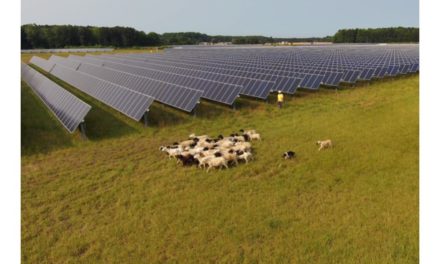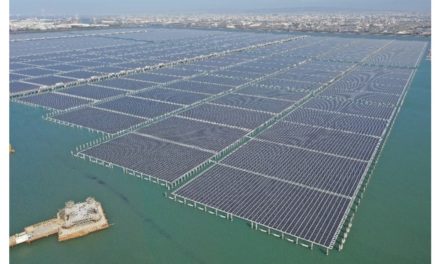- TaiyangNews’ Solar Power Plant Developments Virtual Conference brought together industry leaders from upstream and downstream
- Participants discussed the development and design trends for utility– scale solar to flourish, beyond the ability to bring down costs
- Executive panel argued that while Europe needs to manage its permitting issues, India should deal with land acquisition for solar to grow exponentially at par with fast– growing demand
Even as utility-scale solar applications are credited to have contributed significantly to bringing down the cost of solar PV technology, the question now is what more is being, and can be, done to ensure the segment retains the ability to lower costs, especially as the global PV industry dynamics change ever so often.
To know how developments and design trends help this space accelerate and to learn the challenges and opportunities in the field, TaiyangNews brought together industry leaders to discuss what’s more than record low generation costs for utility-scale PV, in our 1st Virtual Conference on Solar Power Plant Developments.

Enerparc’s Stefan Müller said grid availability and stability can further drive cost reductions for utility-scale PV. (Photo Credit: TaiyangNews)
Greenfield solar developer and energy trader Enerparc Co-Founder Stefan Müller opened the conference with a keynote on challenges and opportunities for development/EPC/O&M.
He explained that while cost driver of conventional energy was always the raw material, in changing times it is not the feedstock alone anymore, but grid availability and stability that can drive further cost reductions in the future.
In the absence of this clarity between energy traders and grid operators, which emanates from bureaucracy and bottlenecks at the bottom of the pyramid in Europe, the pipeline of projects in development continue to grow, according to Müller. This lack of visibility makes it difficult for companies to negotiate contracts.
Müller pointed at the growing interest of corporates into signing power purchase agreements (PPA) and/or becoming an independent power producer (IPP) which makes it easier to have participation from all stakeholders. These corporates are looking at solar as a solution to save money as well as comply with ESG requirements, thus giving a boost to sustainability.
Increased adoption of automated solutions is another trend that’s here to stay to ensure technical optimization of existing plants. However, Müller believes human interface will still be needed at the community and biodiversity level where dependence on bots cannot assure smooth functioning of the power plants.

JinkoSolar’s Maple Hu batted for TOPCon solar technology for large- scale PV power plants. (Photo Credit: TaiyangNews)
Solar module maker JinkoSolar’s Product Solution Manager Maple Hu shared the manufacturer’s experience with TOPCon in PV power plants. Citing case studies that compare n-type and p-type, Hu said n-type offers power generation gain of around 2.03%, ensuring low degradation over a 30-year working life of the modules.
Offering the company’s Tiger Neo module as an example, Hu listed higher power & high efficiency features of n-type technology to lower solar system costs significantly as compared to p-type. The Chinese manufacturer now aims for 25.8% average efficiency target for mass production by 2023-end.
Currently, JinkoSolar has 35 GW TOPCon cell capacity in production to be expanded by another 20 GW. The manufacturer is also building an n-type vertically integrated production base with 56 GW combined capacity in China (see Massive PV Manufacturing Complex In China).

Belectric’s Djaber Berrian said conventional system designs still rule the roost as the most profitable solutions. (Photo Credit: TaiyangNews)
Presenting the EPC side was the Innovation and Development Projects Leader for Belectric, Djaber Berrian, who discussed system design trends for different applications of utility-scale solar.
Berrian argued that while single-axis trackers, biodiversity, agrivoltaics are some of the potential drivers of innovative system designs in the future, the crux of the matter remains that conventional system designs are still the most profitable solutions for utility-scale solar plants.
“Despite the high assumed market values, vertical east west designs are the least competitive amongst analyzed configurations for standard applications as well as Agri PV applications,” stated Berrian.
Designing solar plants with biodiversity or agrivoltaic formation in mind, while a good thing, creates a noticeable loss in NPV. Berrian stressed that policymakers should factor these issues in while framing rules for utility-scale solar facilities so that there is a happy resolution for all parties concerned.

Anhui Huasun Energy’s Tracy Hong shared the HJT manufacturer’s technology roadmap for utility PV. (Photo Credit: TaiyangNews)
Heterojunction solar cell and module manufacturer Anhui Huasun Energy’s Director Pre-Sales Technical and Product Support Tracy Hong listed the benefits that this cell technology brings to large-scale solar applications with its virtue of high efficiency and higher yield. For its HJT panels, the company uses a light conversion film as encapsulation, sealed with butyl adhesive (PIB) that increases the double glass module’s water penetration resistance by 10 times.
According to Hong, these and other various technological advantages give the HJT modules an edge over their PERC counterparts in terms of improving profits for a system installation.
Its product portfolio also includes a high efficiency HJT module for floating solar projects called Himalaya V-ocean.
Huasun will release a G10R HJT product with a 132-cell configuration and 2,382 mm x 1,134 mm size in Q4/2023. It will offer up to 635 W output and 23.5% efficiency. Further up, in 2025 it plans to release a new module based on the tandem cell structure with 800 W output and 28% efficiency for utility applications.
Huasun is also supplying its HJT modules for what Hong termed the world’s largest HJT utility solar project under construction at present. The 650 MW Inercom facility is coming up in Bulgaria’s Pazardzhik region.

ReNew’s Purnendu K. Chaubey threw light on the growing focus of India on hybrid solar and wind power projects. (Photo Credit: TaiyangNews)
Vice President of India’s ReNew Energy Global Plc Purnendu K. Chaubey delved into the concept of hybrid power plants, an upcoming trend in the Indian renewable energy sector, something that ReNew is increasingly exploring (see India’s ‘Largest’ ECB Project Finance For RE Project).
These hybrid projects are aimed at dealing with land availability for renewable energy facilities and also with 24×7 clean power supply.
Pointing to the exceptional growth of solar and wind in India over the last decade, Chaubey said the days of vanilla solar and wind energy tenders are soon to fade as the Ministry of New and Renewable Energy (MNRE) turns its focus on hybrid facilities to quickly achieve the national goal of 500 GW non-fossil fuel capacity by 2030.
While land acquisition remains a challenge, Chaubey said the government is making efforts in this direction via the concept of solar parks, hybrid mode projects, and an open access model with interstate transmission system (ISTS) that enables grid connectivity for projects installed across the country.
India is also getting ready to launch a 1 GW tender for offshore projects, split into 500 MW each for the states of Gujarat and Tamil Nadu, according to Chaubey.
Nextracker’s Jesus Prado listed the benefits of trackers for ground mounted PV systems, helping them improve efficiency and reduce costs. (Photo Credit: TaiyangNews)
Leading solar tracker supplier Nextracker’s Senior Sales Director Jesus Prado dealt with the concerns of keeping utility-scale solar competitive in inflationary environments. Trackers help in this case, he said, as these help modules produce 20% to 30% more energy than fixed tilt installations at 5% to 10% more cost. Bifacial solar modules especially benefit with the configuration.
Its NX-Horizon XTR helps eliminate up to 100% tracker-area grading leading to reducing pile length, earthwork schedule risk and re-vegetation costs and soil erosion, as compared to standard trackers, according to Prado.
He added that Nextracker is also able to contribute to lowering costs for utility– scale solar projects with its proprietary, standardized tracker tooling and economies of scale, localized supply chain and supplier diversification.

GoodWe’s Laurent Bodin listed the benefits string inverters bring to large- scale solar. (Photo Credit: TaiyangNews)
GoodWe’s Sales Manager for Large Scale Projects & Utility Segment EMEA Laurent Bodin talked about intelligent solar power plant operations with string inverters for high yields in the long run.
More and more companies as well as utilities are opting for solar PPAs to cushion against rising electricity prices and other expenses. In such times, the only way to reduce the LCOE is to optimize power generation. Higher power generation means higher ROI.
This is where string inverters come into the picture, said Bodin, referring to the company’s HT 250 kW series that are compatible with both 182 mm and 210 mm PV modules. GoodWe also offers another high-capacity product with 350 kW.

Amarenco’s Eva Vandest said the private sector with its ESG requirements is more keen on prioritizing biodiversity needs of a solar power plant site. (Photo Credit: TaiyangNews)
Group Head of Public Affairs of Amarenco Group Eva Vandest reflected on the significance of ESG for sustainable PV power plant developments for companies, going beyond low-cost generation alone.
While agreeing that permitting and grid issues remain a bottleneck for Europe at present, Vandest pointed at the EU’s efforts to accelerate and fast-track permitting procedures with REPowerEU and Renewable Energy Directive.
As the private sector gets serious about meeting its environmental obligations under ESG requirements, it is easier to work on ensuring biodiversity is at the center when planning power projects. The developers can then prioritize local ecological concerns, timing construction schedule around biology of the native flora and fauna.
Vandest said her company is mindful of its ESG responsibilities towards sustainable PV development in terms of addressing biodiversity, soil regeneration and land use which is what the industry as a whole should also ensure. It will only help increase public acceptance of solar as a clean and affordable energy source.
Executive Panel
Moderated by TaiyangNews Managing Director Michael Schmela, the discussion during the executive panel revolved around the obstacles the industry believes the solar market faces currently and the learnings for solar from the wind energy industry.
Enerparc’s Stefan Müller listed grid constraints as the biggest challenge for Europe, which he believes is majorly due to the inordinately lengthy permitting process. While the policies at the top are changing for the better, it is a different story on the ground as the bureaucracy needs time to catch up and be flexible. These concerns differ from region to region.
Grid is not so much a challenge in India, according to ReNew’s Purnendu K. Chaubey, because the country has been utilizing its existing transmission infrastructure of aging conventional plants till greenfield transmission is built.
What India does need to watch out for is the continued challenge of land acquisition, followed by price volatility of modules and non-availability of long-term, affordable financing. Chaubey also pointed at different regulations for land and grid that make things more complicated for utility-scale PV.
Both Müller and Chaubey said what solar can learn from wind energy is the need to be more transparent, ensuring technological updates and avoiding excessive dependence on O&M.
Agreeing to permitting being a challenge in Europe, Amarenco’s Eva Vandest said the industry needs to do more for public acceptance of this power generation technology which should exert influence on easing grid challenges. Best practices guidelines issued by the industry from time to time are efforts in this direction.
On that note, block your date on September 26, 2023 when TaiyangNews will host a Virtual Conference on Advanced Module Applications—from BIPV to Floating Solar. Registrations are free and can be done here.















